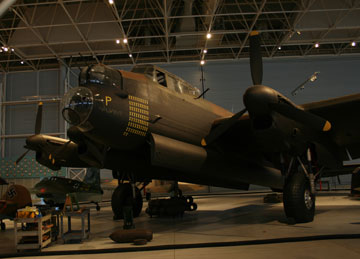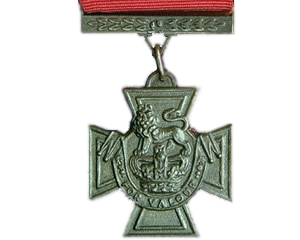Ian Bazalgette
Tools of War
Vickers Wellington Bomber
These British twin-engine bombers were among the sturdiest planes in the Second World War. Their geodesic skeleton – a web-like skeleton of aluminum alloy – was capable of suffering significant damage yet remain intact. It was lighter than other bombers its size, which allowed for bigger bomb payload and a better range, but took longer to build than more conventional planes.
Once the Avro Lancaster and similar, larger four-engine bombers took over frontline duties, the Vickers Wellington continued to be used in “gardening” flights – placing mines in enemy territory – as well as anti-submarine operations. It was armed with six to eight .303 Browning machine guns – two in the nose, two in the tail, and two in the midsection of the plane. The Wellington’s payload capacity was 4,500 pounds of bombs, around one-quarter of the Lancaster’s.

Avro Lancaster Bomber
The Canadian-built Avro Lancaster Mark X bombers were formidable machines, comparable in size and design to the Boeing B-24 Liberator. While the USAF relied heavily on the Liberator, the Avro Lancaster was the primary heavy bomber used by both the RAF and RCAF from 1942 onwards.
The Lancaster Mark X was powered by four Rolls Royce Merlin 224 engines, and could achieve speeds in excess of 400 kilometres per hour. It was one of the most successful night bombers of the Second World War; it could be fitted with bombs of various magnitudes, including the 22,000 pound Grand Slam. Defense against enemy aircraft came courtesy of turrets at the front, upper-mid section, and rear of the aircraft, typically equipped with 0.303in Browning Mark II machine guns.
While serving with No. 115 Squadron, Bazalgette flew Lancaster Mark II bombers. The Lancaster Mark II was powered by four Bristol-Hercules VI radial engines – a shortage of Merlin engines required usage of the Bristol-Hercules engine to tide the Allied forces over. Unlike most Lancs, the Mark II had a ventral turret – the mid-body guns were located on the plane’s underbelly rather than on its back. Only 300 of this model were made.











